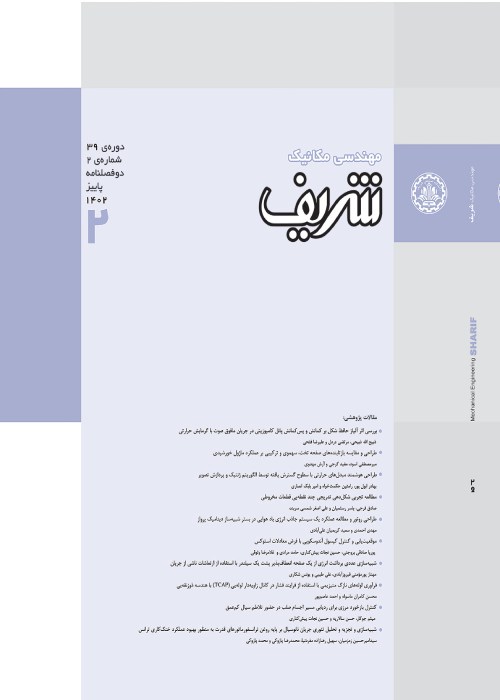Multi-objective optimization of hydraulic engine mounts vibrational behavior by non-dominated sorting genetic algorithm
Engine mounts are designed to hold the engine and isolate its vibration from the chassis of the vehicle. For optimum system performance, the mount must have high dynamic stiffness in the low-frequency range and low dynamic stiffness in the high-frequency range. As the conventional elastomeric mounts fail to satisfy such requirements due to their frequency-invariant behavior, the hydraulic engine mounts have been proposed, which provide appropriate dynamic stiffness employing two fluid-containing chambers. These two chambers are connected through a high-damped pass named inertia track and a floating plate named decoupler. In this paper, the low-frequency range response of a hydraulic engine mount has been studied using a discrete model. The effect of its parameters on the dynamic stiffness, damping ratio, and transmissibility of the mount is discussed. It is shown that increase in dynamic stiffness and damping ratio of the hydraulic engine mount is in contradiction with the decrease in its transmissibility. Hence, a multi-objective non-dominated sorting genetic algorithm has been used to achieve the desired results and the corresponding Pareto front is plotted. It is observed that upper chamber compliance and the effective area of the mount are the most dominant parameters in the optimization procedure. Also, a penalty function is used to transfer the maximum transmissibility out of the engine operation frequency range. Finally, the optimization results for transmissibility, damping ratio, and dynamic stiffness are presented for three series of parameters. It can be concluded that on the limit points of the Pareto front, which correspond to the one-objective optimization, the professed objective is optimized, but on the contradictory objective, no improvement is observed. There are points on the Pareto front where all the three objectives are optimized simultaneously. Therefore, as the transmissibility decreases and its maximum value falls out of the operating frequency range, the damping ratio and dynamic stiffness are increased.
- حق عضویت دریافتی صرف حمایت از نشریات عضو و نگهداری، تکمیل و توسعه مگیران میشود.
- پرداخت حق اشتراک و دانلود مقالات اجازه بازنشر آن در سایر رسانههای چاپی و دیجیتال را به کاربر نمیدهد.


